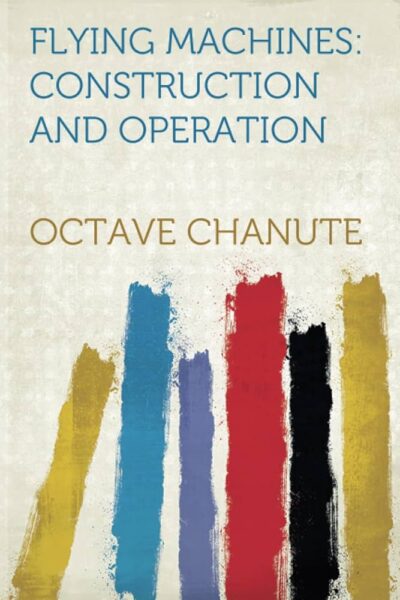32 Results with the "Practical" genre
Adventure Fiction (1164)
Biography (435)
Business & Finance (1)
Children's Literature (124)
Comics (6)
Culture (51)
Drama (123)
Dystopian (29)
Fable (86)
Fantasy (1132)
Fantasy (203)
Fiction (1010)
Finance (1)
Gothic Fiction (12)
Historical Fiction (615)
History (122)
Horror (56)
Lifestyle (36)
Literary (404)
Literary Fiction (207)
Memoir (113)
Mystery (422)
Non-fiction (87)
Novel (549)
Paranormal Fiction (96)
Philosophical (182)
Philosophy (45)
Poetry (249)
Political Fiction (14)
Politics (42)
Psychological (4)
Psychological Thriller (108)
Relationship (6)
Romance Novel (716)
Romantic Melodrama (14)
Satire (91)
Science (46)
Science Fiction (345)
Self-help (68)
Society (65)
Society (2)
Spiritual Growth (1)
story (2)
Thriller (704)
True Crime (56)
view (11)
Women's Fiction (2)
Young Adult (233)
-
Chapter
VERSE: Light and Shade
 Light and Shade begins by recognizing the quiet strength in those who carry both joy and pain without complaint. Life is not a straight path of constant brightness, nor is it always shadowed. Instead, it unfolds in shifting tones—sunlight filtered through passing clouds. The poem invites readers to see this interplay not as confusion, but as richness. By embracing contrast, we learn how to feel more deeply, connect more honestly, and live more fully. What comforts one day may not work the next, yet that,…
Light and Shade begins by recognizing the quiet strength in those who carry both joy and pain without complaint. Life is not a straight path of constant brightness, nor is it always shadowed. Instead, it unfolds in shifting tones—sunlight filtered through passing clouds. The poem invites readers to see this interplay not as confusion, but as richness. By embracing contrast, we learn how to feel more deeply, connect more honestly, and live more fully. What comforts one day may not work the next, yet that,…-
56.4 K • Ongoing
-
-
Chapter
Aviation Development
 Aviation Development during 1911 reflects a year of groundbreaking progress, where innovation and daring merged to shape the future of flight. This chapter offers a detailed look at how records in speed, distance, duration, and altitude were achieved by aviators across both Europe and America. These achievements are not only categorized by their nature but also distinguished by whether pilots flew solo or carried passengers. The scope of progress wasn’t isolated—it was global. Pilots pushed their…
Aviation Development during 1911 reflects a year of groundbreaking progress, where innovation and daring merged to shape the future of flight. This chapter offers a detailed look at how records in speed, distance, duration, and altitude were achieved by aviators across both Europe and America. These achievements are not only categorized by their nature but also distinguished by whether pilots flew solo or carried passengers. The scope of progress wasn’t isolated—it was global. Pilots pushed their…-
142.7 K • Ongoing
-
-
 Notable Cross-Country Flights of 1911 brought aviation to the forefront of technological and human achievement, as pilots tested not just machines but their own endurance across vast landscapes. One of the year’s most dramatic highlights was Orville Wright’s flight at Killdevil Hills, where he remained aloft for over ten minutes despite strong winds. This feat demonstrated the increasing control and stability of powered flight. While Wright’s contribution remained largely experimental, many aviators…
Notable Cross-Country Flights of 1911 brought aviation to the forefront of technological and human achievement, as pilots tested not just machines but their own endurance across vast landscapes. One of the year’s most dramatic highlights was Orville Wright’s flight at Killdevil Hills, where he remained aloft for over ten minutes despite strong winds. This feat demonstrated the increasing control and stability of powered flight. While Wright’s contribution remained largely experimental, many aviators…-
142.7 K • Ongoing
-
-
 Aeroplanes and Dirigible Balloons in Warfare marks a period when aerial innovation began reshaping both public imagination and military doctrine. The chapter opens with highlights from two high-profile races that reflect not only mechanical progress but also public fascination with the speed and capabilities of early aircraft. L. Beachey’s journey from New York to Philadelphia in a Curtiss machine demonstrated impressive consistency at 45 miles per hour. Meanwhile, E. Ovington’s triumph in a…
Aeroplanes and Dirigible Balloons in Warfare marks a period when aerial innovation began reshaping both public imagination and military doctrine. The chapter opens with highlights from two high-profile races that reflect not only mechanical progress but also public fascination with the speed and capabilities of early aircraft. L. Beachey’s journey from New York to Philadelphia in a Curtiss machine demonstrated impressive consistency at 45 miles per hour. Meanwhile, E. Ovington’s triumph in a…-
142.7 K • Ongoing
-
-
 Flying Machines: Construction and Operation is a 1908 book by the aviation pioneer, William J. Hammer. It provides detailed instructions on building and operating early flying machines, covering the principles of flight, materials, and design. The book reflects the early 20th century's fascination with flight and offers insights into the development of aviation technology.
Flying Machines: Construction and Operation is a 1908 book by the aviation pioneer, William J. Hammer. It provides detailed instructions on building and operating early flying machines, covering the principles of flight, materials, and design. The book reflects the early 20th century's fascination with flight and offers insights into the development of aviation technology.-
4.7 K • Nov 8, '24
-
4.3 K • Nov 8, '24
-
4.3 K • Nov 8, '24
-
-
 Chapter XXVIII-Flying Machines: Construction and Operation functions as an essential lexicon for anyone seeking clarity in the evolving language of aviation. It begins by introducing foundational terms that outline the scope of aerial engineering, such as “Aerodrome,” described not as a place, but as a mechanical entity intended to operate within the sky’s domain. The entry sets the tone for what follows: a clear, structured breakdown of language specific to flying machine technology. “Aerofoil”…
Chapter XXVIII-Flying Machines: Construction and Operation functions as an essential lexicon for anyone seeking clarity in the evolving language of aviation. It begins by introducing foundational terms that outline the scope of aerial engineering, such as “Aerodrome,” described not as a place, but as a mechanical entity intended to operate within the sky’s domain. The entry sets the tone for what follows: a clear, structured breakdown of language specific to flying machine technology. “Aerofoil”…-
142.7 K • Ongoing
-
-
 Chapter X - Flying Machines Construction And Operation explores the fundamental task of sizing aircraft correctly to match their intended function. Designing a flying machine involves more than choosing wings and engines; it demands a thorough understanding of how weight and surface area work together to create lift. Every element—from the pilot to the smallest component—contributes to the total load that must be supported midair. The chapter breaks down this complex task by offering real-world data…
Chapter X - Flying Machines Construction And Operation explores the fundamental task of sizing aircraft correctly to match their intended function. Designing a flying machine involves more than choosing wings and engines; it demands a thorough understanding of how weight and surface area work together to create lift. Every element—from the pilot to the smallest component—contributes to the total load that must be supported midair. The chapter breaks down this complex task by offering real-world data…-
142.7 K • Ongoing
-
-
 Chapter XI - Flying Machines Construction And Operation introduces the reader to a vital topic in aviation—how to control the machine with precision and awareness. This chapter goes beyond the mechanical structure and enters the world of real-time decision-making. Flying is not just about lift or propulsion; it’s about command—over altitude, direction, and stability, all at once, under the pilot’s full authority. The operator is expected to act instantly and with confidence, often making rapid…
Chapter XI - Flying Machines Construction And Operation introduces the reader to a vital topic in aviation—how to control the machine with precision and awareness. This chapter goes beyond the mechanical structure and enters the world of real-time decision-making. Flying is not just about lift or propulsion; it’s about command—over altitude, direction, and stability, all at once, under the pilot’s full authority. The operator is expected to act instantly and with confidence, often making rapid…-
142.7 K • Ongoing
-
-
 Chapter XII - Flying Machines Construction And Operation offers clear, practical guidance for those beginning their journey into the world of aviation. Rather than focusing on dramatic altitude records or sensational feats, this chapter encourages new pilots to prioritize control, safety, and confidence in their first experiences. By drawing on the wisdom of early aviators, the authors present a flight philosophy built around gradual mastery rather than risky experimentation. Most experienced pilots,…
Chapter XII - Flying Machines Construction And Operation offers clear, practical guidance for those beginning their journey into the world of aviation. Rather than focusing on dramatic altitude records or sensational feats, this chapter encourages new pilots to prioritize control, safety, and confidence in their first experiences. By drawing on the wisdom of early aviators, the authors present a flight philosophy built around gradual mastery rather than risky experimentation. Most experienced pilots,…-
142.7 K • Ongoing
-
-
 Chapter XIII - Flying Machines Construction And Operation takes a technical yet practical look into the core challenge that defines flight—power. Unlike vehicles on roads that rely on solid ground for support, airships and aeroplanes must expend energy not only to move but also to stay aloft. This need for constant lift transforms the dynamics of power usage, making flight a far more demanding exercise in engineering than land travel. While a car weighing 4,000 pounds can be driven at 50 miles per hour…
Chapter XIII - Flying Machines Construction And Operation takes a technical yet practical look into the core challenge that defines flight—power. Unlike vehicles on roads that rely on solid ground for support, airships and aeroplanes must expend energy not only to move but also to stay aloft. This need for constant lift transforms the dynamics of power usage, making flight a far more demanding exercise in engineering than land travel. While a car weighing 4,000 pounds can be driven at 50 miles per hour…-
142.7 K • Ongoing
-
- 1 2 … 4 Next
